On Philanthropy - Donor-advised funds: on-ramp to philanthropy’s superhighway
Donor-advised funds are accelerating – but some nonprofits are stuck in the slow lane
 Contributed by AFP SEWI
Contributed by AFP SEWI
Milwaukee Business Journal
July 14, 2017 issue
Annual investment in donor-advised funds grew from $9 billion in 2010 to $22 billion in 2015, according to the National Philanthropic Trust. A doubling of giving by would-be philanthropists sounds like a good thing. So why aren’t nonprofits more excited about it?
To create a donor-advised fund, donors contribute to a personal fund held by a financial institution like Fidelity Charitable, a community foundation like Greater Milwaukee Foundation, or other nonprofit. Donors earn an immediate tax deduction, then direct funds to favorite charities over time. Easy and tax-advantageous, DAFs are the fastest-growing charitable giving vehicle.
Yet some nonprofits look sideways at DAFs. There are no requirements for how much donors must disburse annually, so some in the sector fear that DAFs become parking lots for funds invested in the name of charity. They would prefer more direct relationships with their donors, rather than through an intermediary.
But Andy Hibel encourages a different view. He’s founder of The Advise Us Fund, a nonprofit that helps fellow charities manage the processes of donor-advised and planned giving. “Charities may not like feeling a step removed from donors, but donor-advised funds encourage donors to make the leap from giving cash to giving assets. As donors add dimension to their giving, they tend to give more. These funds become the on-ramp to true major giving.”
Fidelity’s experience suggests Hibel is right. Compared to similar donors who don’t use a DAF, Fidelity Charitable donors are much more likely to give $10,000 or more a year and to give to six or more charities. They are three times more likely to give appreciated assets.
Local trends confirm that the funds are not just tax shelters. Tim Larson, Vice President of Development and Donor Services at Greater Milwaukee Foundation, says that the Foundation’s 419 fund holders have given $111 million over the last five years. On average, 70% of them make grants in any one year; some of the others are accumulating funds with a larger gift in mind. “The reason for such strong grant making is because we proactively educate donors about community needs and encourage them to give,” says Larson. “We live in a community that is very generous.”
Nancy Seidl Nelson, president of the Southeastern Wisconsin chapter of the Association of Fundraising Professionals, says the stakes are high. “Nationally, $40-$140 trillion will pass between generations in the next 50 years; up to one-third of that will come to nonprofits through DAFs and other planned giving vehicles.”
Hibel is confident that donor-centric nonprofits will embrace donor-advised funds. “DAFs are a channel that makes giving easy. But philanthropy is still fundamentally about nonprofits building relationships with those who want to do good.”
AFP’s monthly On Philanthropy column in the Milwaukee Business Journal is edited by Doug Diefenbach, principal of Diefenbach Communications Strategies, a full-service consultancy specializing in philanthropic communications. Please contribute ideas for future articles here.
